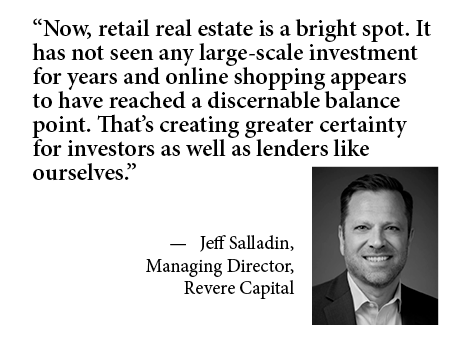For more than seven months in 2024, the commercial real estate investment market remained on a sluggish path. High interest rates continued to not only challenge many asset owners who needed refinancing, but also buyers and sellers looking to make deals. For instance, some $174.7 billion in property investment sales during the first half of the year was 7 percent below a year earlier, according to MSCI Real Assets.
In such uncertain times, it’s not unusual for the commercial real estate market to experience bouts of bifurcation. Typically, those are marked by trends such as rising demand for higher quality offices during economic slumps when tenants can fetch discounted rents. Early in the recovery phase, it’s not unusual for investment to flow into tech-oriented metros at the expense of other cities.
The Federal Reserve’s aggressive hike of the federal funds rate has created another category of bifurcation, especially as it relates to floating-rate bridge debt and how lenders are managing their loan portfolios. That is, the difference between the performance of assets depending on when owners financed the properties, says Jeff Salladin, a managing director with Dallas-based private debt fund Revere Capital.
“It’s a question of vintage,” he explains. “Loans originated before the rate increases — call it January 1, 2023 — are likely performing poorly and are under stress because landlords are struggling to cover debt payments that have increased substantially since then. But deals made after that date are doing well.”
Plodding Resolutions
Inflation and expenses such as insurance and property taxes are also contributing to the poor performance of deals made when the cost of capital was at historic lows, Salladin adds. As has been the case for several months, how the outstanding balances in the older vintage deals are resolved remains to be seen.
Most borrowers can’t refinance at the higher interest rates because the properties have lost value. Depending on location, property type and other metrics, a loan that was equal to 60 percent of an asset’s value in 2022 could now be equal to 80 percent of that value, Salladin reports. Given the reluctance of property owners to provide or find additional equity to fill the gap or of lenders to allow short sales, the dynamic has fueled loan modification and extensions.
Much to the dismay of many in the market, lenders aren’t champing at the bit to clean up the majority of troubled loans through auctions, foreclosures or other dispositions. While a stock market sell-off that began in early August sparked suggestions of an emergency rate cut by the Fed that would catalyze quicker solutions, Salladin remains in the camp that believes problem deals will be worked out over a drawn-out period.
“It’s not like we’re going to have a sudden pop or event where there’s going to be a rush to resolve these deals,” he says. “It’s more likely happen in a drip, drip, drip fashion that will cause everyone to pull their hair out.”
Kicking the can down the road hardly guarantees less pain in the future, Salladin observes. Recently, the former One AT&T Center in St. Louis, a 44-story office tower that sold for $205 million in 2006 and then $4.5 million two years ago, changed hands for $3.6 million in an auction.
Retail Resurgence
The news halfway through 2024 isn’t all bad, however. For the last several years, a glut of space, the growth of ecommerce and a merry-go-round of weak retailers buffeted retail real estate, driving investors to apartments, warehouses, offices and other categories that were considered to be safer.
But the lack of meaningful new construction for more than a decade combined with the hastened re-use or elimination of underperforming retail space during the pandemic have reversed retail’s fortunes: What used to be a tenant’s market is now a landlord’s market, Salladin says. The average time it takes to lease up retail space, for example, has hit an all-time low — roughly four months from more than 14 months as recently as 2017, according to data from CoStar.
The reversal of fortunes is expected to attract lenders and institutional investors back to the space. Among other signs, Reuters recently reported that Blackstone is negotiating to buy Retail Opportunity Investment Corporation, an owner of 10.7 million square feet of shopping centers valued at some $2 billion.
“Following the financial crisis in 2008, many investors and lenders generally disfavored retail and wanted to get away from it and any category related to it,” Salladin reports. “But now, retail real estate is a bright spot. It has not seen any large-scale investment for years and online shopping appears to have reached a discernable balance point. That’s creating greater certainty for investors as well as lenders like ourselves.”
— By Joe Gose. Revere Capital is a content partner of REBusinessOnline. For more information about the content partner program, click here.


